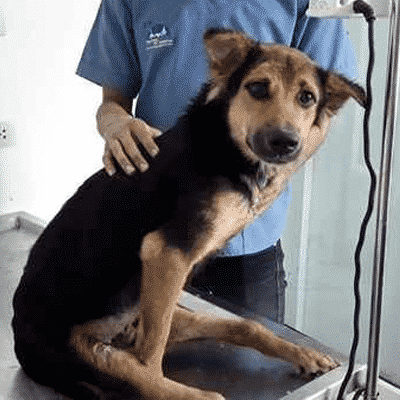Understanding the Types of Non-Injury Canine Paralysis
If your child were to develop paralysis it would be heart breaking. So, as doggy parents, getting a diagnosis of Non Injury Canine Paralysis can be quite devastating. Partial or total paralysis is pretty easy to spot: a dog may be completely immobile, may have front or back legs that are crippled or weakened, or may even be unable to eliminate himself without assistance.
Our 20-year history of working with paralysis cases has often demonstrated the chance for most dogs to survive a difficult condition with extra care and still be able to function. Of course they can also use some extra-special Nzymes nutritional support. It can go a long way to support difficult mobility-challenged dog’s quality and longevity of life.
While the symptoms of paralysis are visibly straightforward, the cause of paralysis can vary greatly.

Four Causes of Canine Paralysis – Not Tied to Injury
1. Degenerative Conditions
While some believe that many degenerative diseases may actually be hereditary, it’s hard to say. It’s true that spinal or bone marrow diseases (myelopathies) do have a tendency to follow certain breeds more than others but science hasn’t conclusively found the suspected gene just yet. Proper nutrition has proven to offer powerful support in certain cases of degenerative paralysis and certain medications can help reduce discomfort and complications from paralysis, but as yet there is no secret cure-all.
2. Tick Bites and Lyme Disease
Depending on where you live, ticks may be a constant irritation – and usually that is all they are. However, if you live in an area where Lyme disease is prevalent, you’ll want to be prepared for this surprising cause of paralysis. If a tick carrying Lyme disease bites your dog, it will release a potent toxin into the body. The toxin directly affects the nervous system and can lead to paralysis. Symptoms usually begin to show between 6-9 days after the infected bite. It only takes one bad tick to do the trick, but not all dogs infected with this toxin will develop paralysis. Be vigilant and do a tick check frequently – especially if you live in the eastern or upper mid west states. Carefully removing the tick is usually enough to start reversing the paralysis. That’s the good news. The bad news is, if left untreated, this kind of paralysis can lead to death as the infection attacks respiratory functions. Be sure to take your dog to the vet immediately when you see the symptoms after a tick bite.
3. Infection Issues
It may come as a surprise, but infections that are not treated carefully and quickly in dogs can cause damage to the nerves, muscles, and brain. This is especially prominent when the infected area is in the ears or face of the dog. If you detect that your dog has any type of infection, don’t ignore it and take action as quickly as possible.
4. Tumor Troubles
A tumor that starts pressing against the spine or certain nerve bundles can also cause paralysis, though it will usually occur slowly. You may first notice weakness on a certain side of the body or an increasing inability to perform everyday functions. A simple set of spinal radio graphs (x-rays) will indicate if tumors are forming.
Yes, canine paralysis can be a very scary and emotionally devastating diagnosis, but don’t let it stop you in your tracks. Many of these conditions can show remarkable results with the use of a natural supplement that supports renewed mobility functions.
Watch the video below to see how Bella was able to recover from her paralysis using natural supplements.
Natural Support for Canine Paralysis Challenges
RECENT REVIEWS – DOG PARALYSIS RECOVERY
Thank you for Visiting Nzymes






